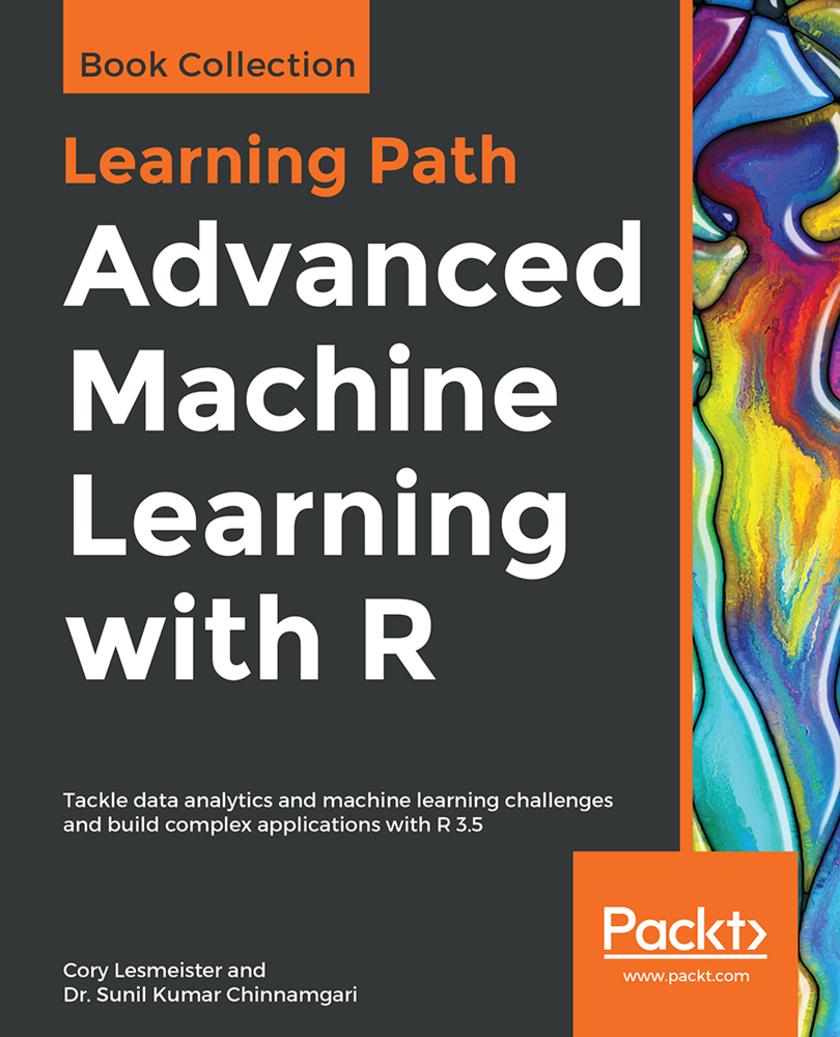
Advanced Machine Learning with R
¥88.28
Master machine learning techniques with real-world projects that interface TensorFlow with R, H2O, MXNet, and other languages Key Features * Gain expertise in machine learning, deep learning and other techniques * Build intelligent end-to-end projects for finance, social media, and a variety of domains * Implement multi-class classification, regression, and clustering Book Description R is one of the most popular languages when it comes to exploring the mathematical side of machine learning and easily performing computational statistics. This Learning Path shows you how to leverage the R ecosystem to build efficient machine learning applications that carry out intelligent tasks within your organization. You'll tackle realistic projects such as building powerful machine learning models with ensembles to predict employee attrition. You'll explore different clustering techniques to segment customers using wholesale data and use TensorFlow and Keras-R for performing advanced computations. You’ll also be introduced to reinforcement learning along with its various use cases and models. Additionally, it shows you how some of these black-box models can be diagnosed and understood. By the end of this Learning Path, you’ll be equipped with the skills you need to deploy machine learning techniques in your own projects. This Learning Path includes content from the following Packt products: * R Machine Learning Projects by Dr. Sunil Kumar Chinnamgari * Mastering Machine Learning with R - Third Edition by Cory Lesmeister What you will learn * Develop a joke recommendation engine to recommend jokes that match users’ tastes * Build autoencoders for credit card fraud detection * Work with image recognition and convolutional neural networks * Make predictions for casino slot machine using reinforcement learning * Implement NLP techniques for sentiment analysis and customer segmentation * Produce simple and effective data visualizations for improved insights * Use NLP to extract insights for text * Implement tree-based classifiers including random forest and boosted tree Who this book is for If you are a data analyst, data scientist, or machine learning developer this is an ideal Learning Path for you. Each project will help you test your skills in implementing machine learning algorithms and techniques. A basic understanding of machine learning and working knowledge of R programming is necessary to get the most out of this Learning Path.
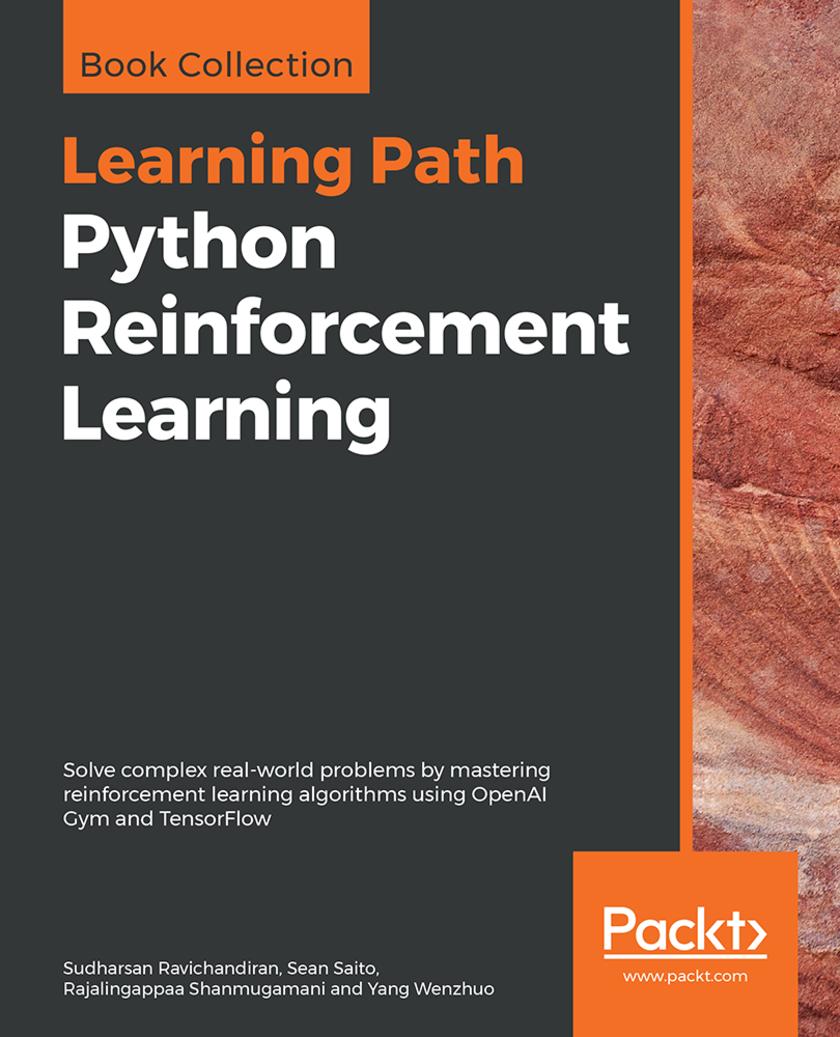
Python Reinforcement Learning
¥88.28
Apply modern reinforcement learning and deep reinforcement learning methods using Python and its powerful libraries Key Features * Your entry point into the world of artificial intelligence using the power of Python * An example-rich guide to master various RL and DRL algorithms * Explore the power of modern Python libraries to gain confidence in building self-trained applications Book Description Reinforcement Learning (RL) is the trending and most promising branch of artificial intelligence. This Learning Path will help you master not only the basic reinforcement learning algorithms but also the advanced deep reinforcement learning algorithms. The Learning Path starts with an introduction to RL followed by OpenAI Gym, and TensorFlow. You will then explore various RL algorithms, such as Markov Decision Process, Monte Carlo methods, and dynamic programming, including value and policy iteration. You'll also work on various datasets including image, text, and video. This example-rich guide will introduce you to deep RL algorithms, such as Dueling DQN, DRQN, A3C, PPO, and TRPO. You will gain experience in several domains, including gaming, image processing, and physical simulations. You'll explore TensorFlow and OpenAI Gym to implement algorithms that also predict stock prices, generate natural language, and even build other neural networks. You will also learn about imagination-augmented agents, learning from human preference, DQfD, HER, and many of the recent advancements in RL. By the end of the Learning Path, you will have all the knowledge and experience needed to implement RL and deep RL in your projects, and you enter the world of artificial intelligence to solve various real-life problems. This Learning Path includes content from the following Packt products: * Hands-On Reinforcement Learning with Python by Sudharsan Ravichandiran * Python Reinforcement Learning Projects by Sean Saito, Yang Wenzhuo, and Rajalingappaa Shanmugamani What you will learn * Train an agent to walk using OpenAI Gym and TensorFlow * Solve multi-armed-bandit problems using various algorithms * Build intelligent agents using the DRQN algorithm to play the Doom game * Teach your agent to play Connect4 using AlphaGo Zero * Defeat Atari arcade games using the value iteration method * Discover how to deal with discrete and continuous action spaces in various environments Who this book is for If you’re an ML/DL enthusiast interested in AI and want to explore RL and deep RL from scratch, this Learning Path is for you. Prior knowledge of linear algebra is expected.
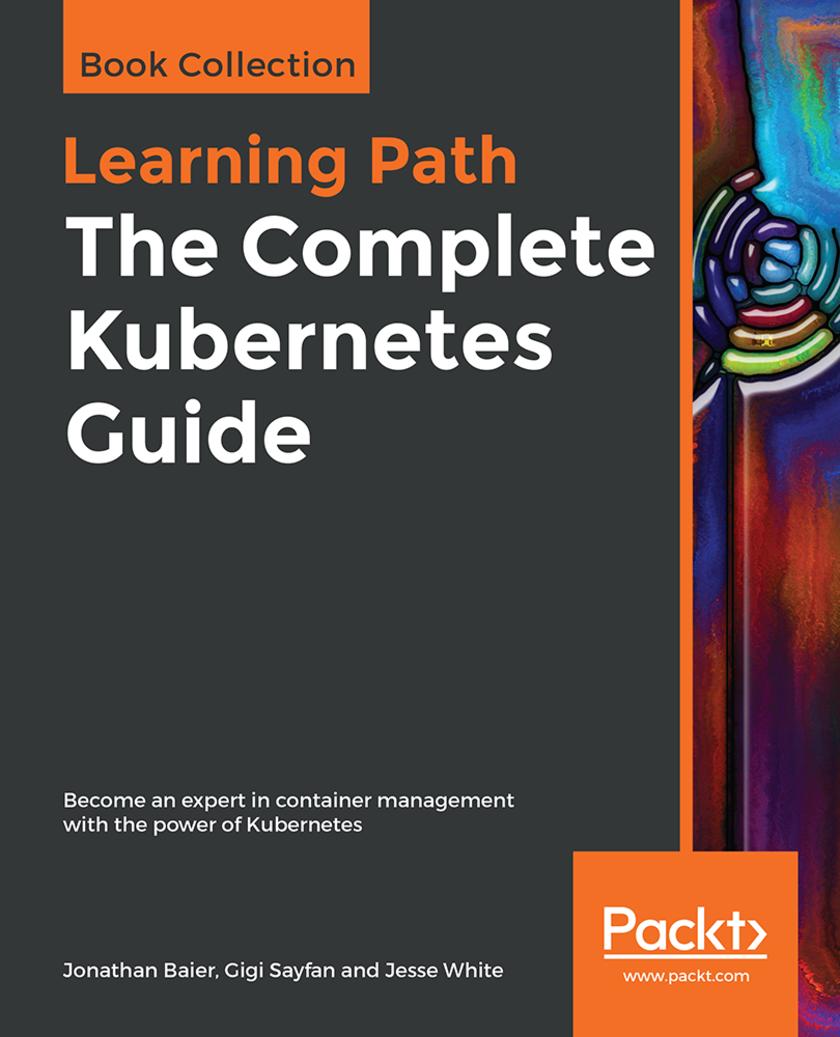
The Complete Kubernetes Guide
¥88.28
Design, deploy, and manage large-scale containers using Kubernetes Key Features * Gain insight into the latest features of Kubernetes, including Prometheus and API aggregation * Discover ways to keep your clusters always available, scalable, and up-to-date * Master the skills of designing and deploying large clusters on various cloud platforms Book Description If you are running a number of containers and want to be able to automate the way they’re managed, it can be helpful to have Kubernetes at your disposal. This Learning Path guides you through core Kubernetes constructs, such as pods, services, replica sets, replication controllers, and labels. You'll get started by learning how to integrate your build pipeline and deployments in a Kubernetes cluster. As you cover more chapters in the Learning Path, you'll get up to speed with orchestrating updates behind the scenes, avoiding downtime on your cluster, and dealing with underlying cloud provider instability in your cluster. With the help of real-world use cases, you'll also explore options for network configuration, and understand how to set up, operate, and troubleshoot various Kubernetes networking plugins. In addition to this, you'll gain insights into custom resource development and utilization in automation and maintenance workflows. By the end of this Learning Path, you'll have the expertise you need to progress from an intermediate to an advanced level of understanding Kubernetes. This Learning Path includes content from the following Packt products: * Getting Started with Kubernetes - Third Edition by Jonathan Baier and Jesse White * Mastering Kubernetes - Second Edition by Gigi Sayfan What you will learn * Download, install, and configure the Kubernetes code base * Create and configure custom Kubernetes resources * Use third-party resources in your automation workflows * Deliver applications as standard packages * Set up and access monitoring and logging for Kubernetes clusters * Set up external access to applications running in the cluster * Manage and scale Kubernetes with hosted platforms on Amazon Web Services (AWS), Azure, and Google Cloud Platform (GCP) * Run multiple clusters and manage them from a single control plane Who this book is for If you are a developer or a system administrator with an intermediate understanding of Kubernetes and want to master its advanced features, then this book is for you. Basic knowledge of networking is required to easily understand the concepts explained.
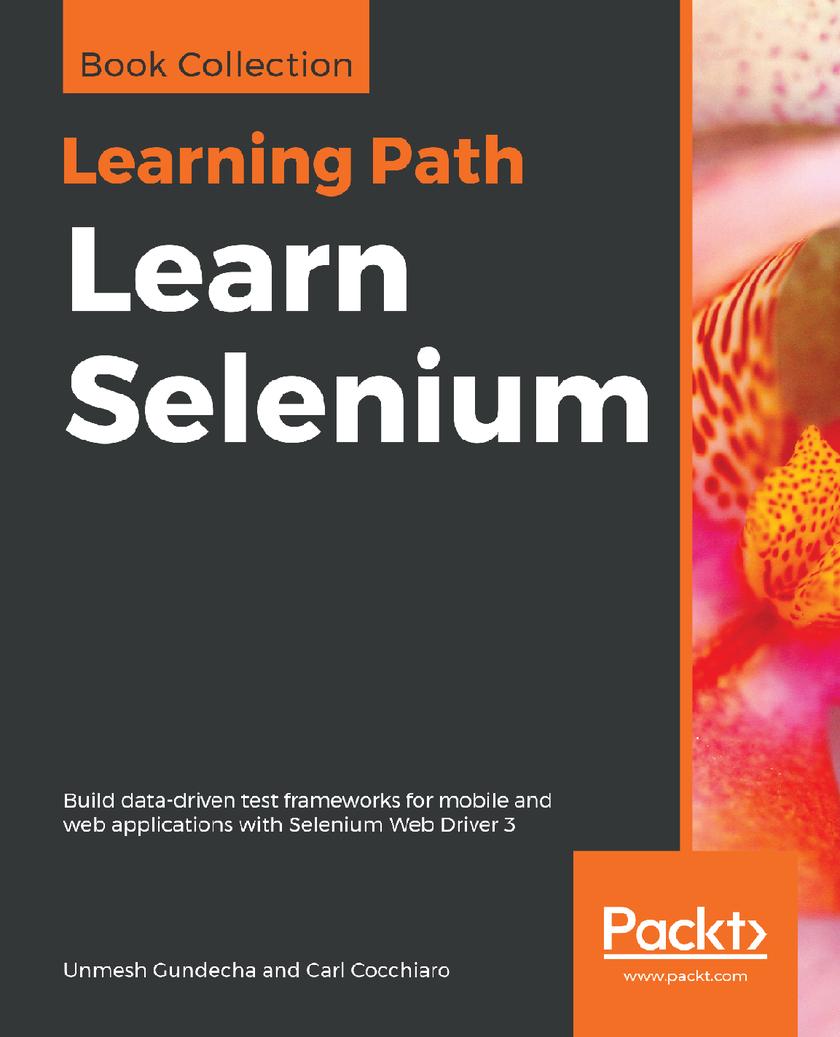
Learn Selenium
¥88.28
Learn end-to-end automation testing techniques for web and mobile browsers using Selenium WebDriver, AppiumDriver, Java, and TestNG Key Features * Explore the Selenium grid architecture and build your own grid for browser and mobile devices * Use ExtentReports for processing results and SauceLabs for cloud-based test services * Unlock the full potential of Selenium to test your web applications. Book Description Selenium WebDriver 3.x is an open source API for testing both browser and mobile applications. With the help of this book, you can build a solid foundation and can easily perform end-to-end testing on web and mobile browsers.You'll begin by being introduced to the Selenium Page Object Model for software development. You'll architect your own framework with a scalable driver class, Java utility classes, and support for third-party tools and plugins. You'll design and build a Selenium grid from scratch to enable the framework to scale and support different browsers, mobile devices, and platforms.You'll strategize and handle a rich web UI using the advanced WebDriver API and learn techniques to handle real-time challenges in WebDriver. You'll perform different types of testing, such as cross-browser testing, load testing, and mobile testing. Finally, you will also be introduced to data-driven testing, using TestNG to create your own automation framework.By the end of this Learning Path, you'll be able to design your own automation testing framework and perform data-driven testing with Selenium WebDriver. This Learning Path includes content from the following Packt products: * Selenium WebDriver 3 Practical Guide - Second Edition by Unmesh Gundecha * Selenium Framework Design in Data-Driven Testing by Carl Cocchiaro What you will learn * Use different mobile and desktop browser platforms with Selenium 3 * Use the Actions API for performing various keyboard and mouse actions * Design the Selenium Driver Class for local, remote, and third-party grid support * Build page object classes with the Selenium Page Object Model * Develop data-driven test classes using the TestNG framework * Encapsulate data using the JSON protocol * Build a Selenium Grid for RemoteWebDriver testing * Build and use utility classes in synchronization, file I/O, reporting and test listener classes Who this book is for This Learning Path is ideal for software quality assurance/testing professionals, software project managers, or software developers interested in using Selenium for testing their applications. Professionals responsible for designing and building enterprise-based testing frameworks will also find this Learning Path useful. Prior programming experience in Java are TestNG is necessary.
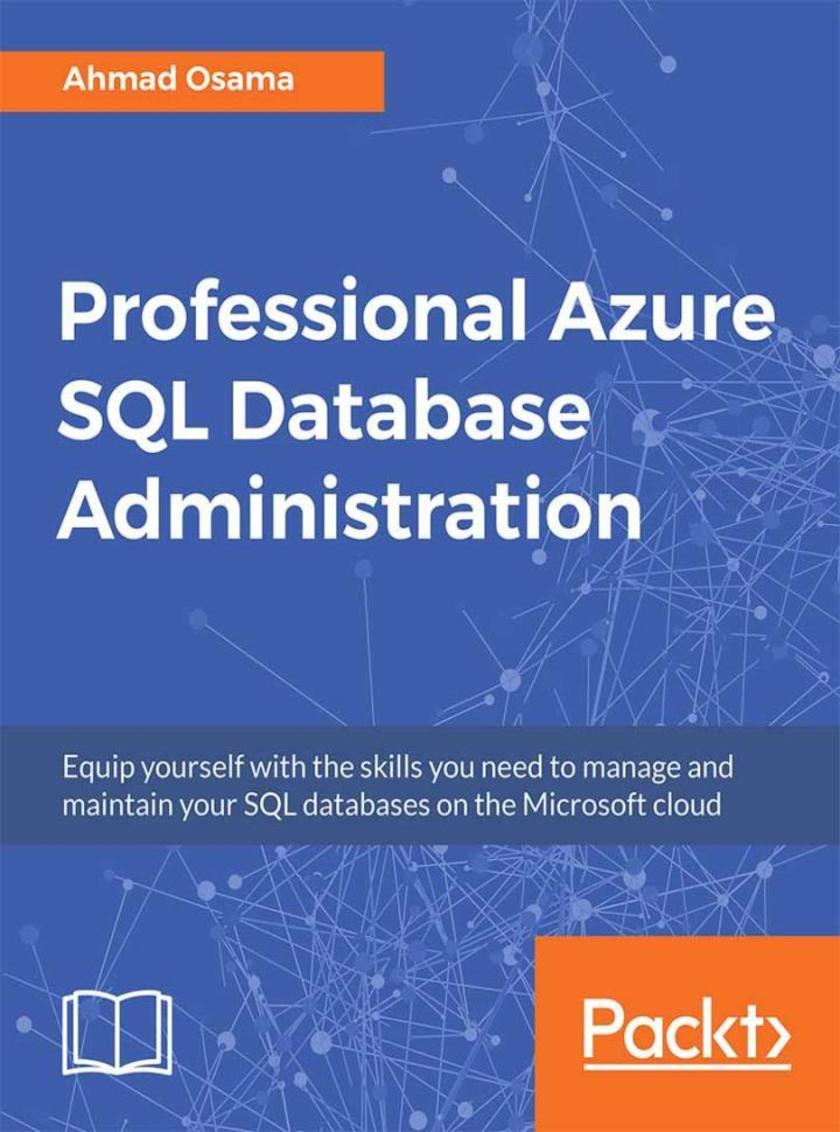
Professional Azure SQL Database Administration
¥87.19
If your application source code is overly verbose, it can be a nightmare to maintain. Write concise and expressive, type-safe code in an environment that lets you build for the JVM, browser, and more. Key Features *Expert guidance that shows you to efficiently use both object-oriented and functional programming techniques *Understand functional programming libraries, such as Cats and Scalaz, and use them to augment your Scala development *Perfectly balances theory and hands-on exercises, assessments, and activities Book Description This book teaches you how to build and contribute to Scala programs, recognizing common patterns and techniques used with the language. You’ll learn how to write concise, functional code with Scala. After an introduction to core concepts, syntax, and writing example applications with scalac, you’ll learn about the Scala Collections API and how the language handles type safety via static types out-of-the-box. You’ll then learn about advanced functional programming patterns, and how you can write your own Domain Specific Languages (DSLs). By the end of the book, you’ll be equipped with the skills you need to successfully build smart, efficient applications in Scala that can be compiled to the JVM. What you will learn *Understand the key language syntax and core concepts for application development *Master the type system to create scalable type-safe applications while cutting down your time spent debugging *Understand how you can work with advanced data structures via built-in features such as the Collections library *Use classes, objects, and traits to transform a trivial chatbot program into a useful assistant *Understand what are pure functions, immutability, and higher-order functions *Recognize and implement popular functional programming design patterns Who this book is for This is an ideal book for developers who are looking to learn Scala, and is particularly well suited for Java developers looking to migrate across to Scala for application development on the JVM.
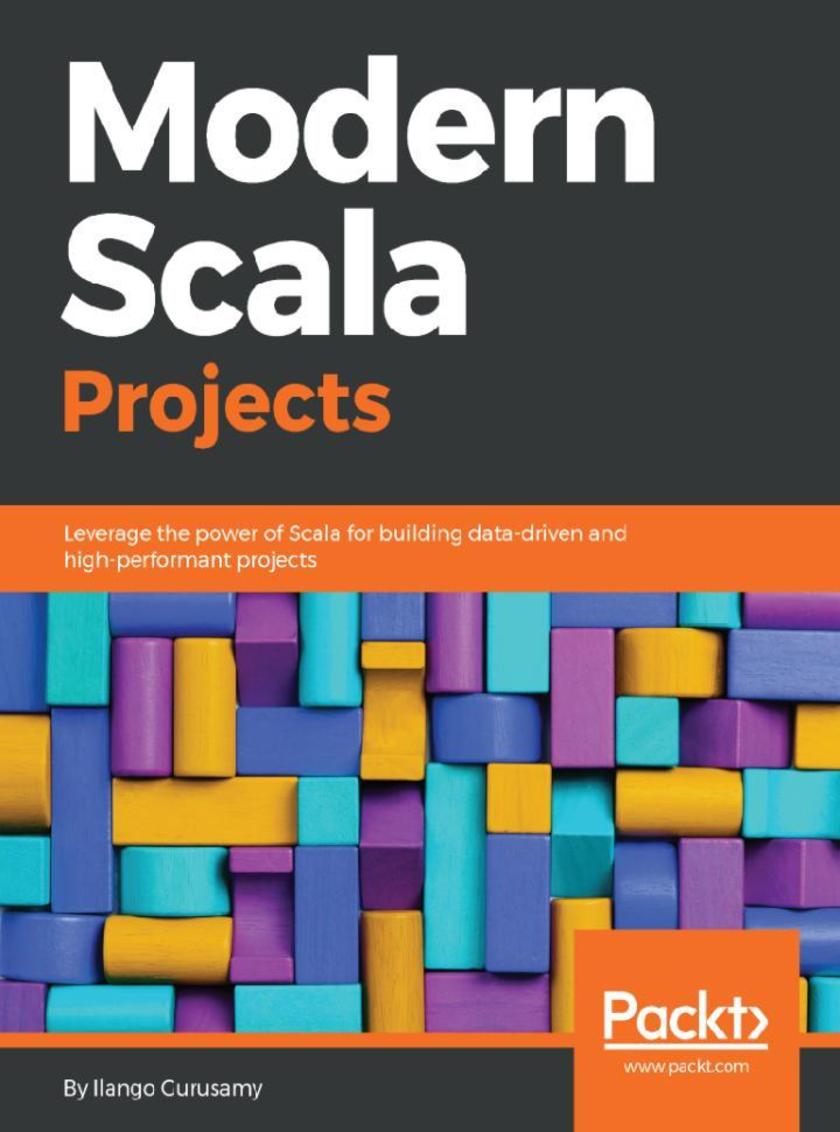
Modern Scala Projects
¥87.19
Use an open source firewall and features such as failover, load balancer, OpenVPN, IPSec, and Squid to protect your network Key Features *Explore pfSense, a trusted open source network security solution *Configure pfSense as a firewall and create and manage firewall rules *Test pfSense for failover and load balancing across multiple WAN connections Book Description While connected to the internet, you’re a potential target for an array of cyber threats, such as hackers, keyloggers, and Trojans that attack through unpatched security holes. A firewall works as a barrier (or ‘shield’) between your computer and cyberspace. pfSense is highly versatile firewall software. With thousands of enterprises using pfSense, it is fast becoming the world's most trusted open source network security solution. Network Security with pfSense begins with an introduction to pfSense, where you will gain an understanding of what pfSense is, its key features, and advantages. Next, you will learn how to configure pfSense as a firewall and create and manage firewall rules. As you make your way through the chapters, you will test pfSense for failover and load balancing across multiple wide area network (WAN) connections. You will then configure pfSense with OpenVPN for secure remote connectivity and implement IPsec VPN tunnels with pfSense. In the concluding chapters, you’ll understand how to configure and integrate pfSense as a Squid proxy server. By the end of this book, you will be able to leverage the power of pfSense to build a secure network. What you will learn *Understand what pfSense is, its key features, and advantages *Configure pfSense as a firewall *Set up pfSense for failover and load balancing *Connect clients through an OpenVPN client *Configure an IPsec VPN tunnel with pfSense *Integrate the Squid proxy into pfSense Who this book is for Network Security with pfSense is for IT administrators, security administrators, technical architects, chief experience officers, and individuals who own a home or small office network and want to secure it.
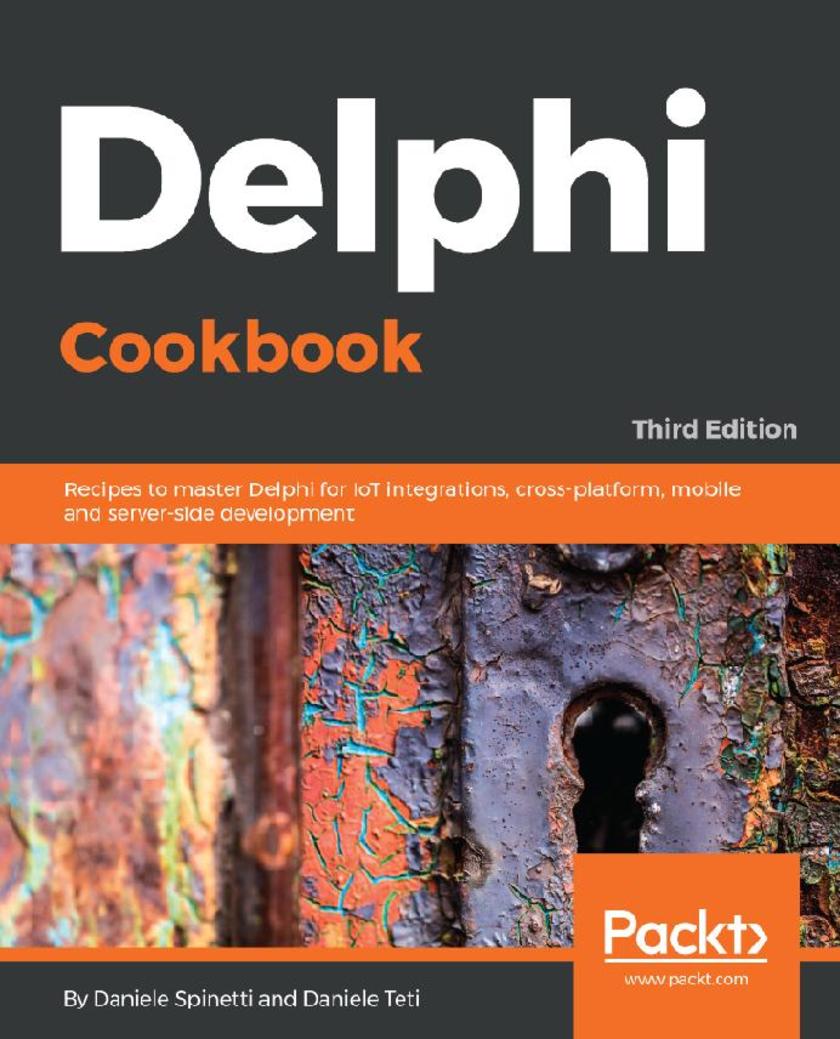
Delphi Cookbook,
¥87.19
A fast-paced guide to putting your GeoServer-based application into fast, user-friendly, and secure production Key Features * Resolve bottlenecks, optimize data stores, and cluster server resources * Use identity management and authentication for a user-specific, secure web application * Go beyond traditional web hosting to explore the full range of hosting options in the cloud Book Description GeoServer is open source, server-side software written in Java that allows users to share and edit geospatial data. In this book, you'll start by learning how to develop a spatial analysis platform with web processing services. Then you'll see how to develop an algorithm by chaining together geospatial analysis processes, which you can share with anyone in the world. Next you'll delve into a very important technique to improve the speed of your map application—tile caching. Here, you'll understand how tile caching works, how to develop an effective tile cache-supported web service, and how to leverage tile caching in your OpenLayers web application. Further on, you'll explore important tweaks to produce a performant GeoServer-backed web mapping application. Moving on, you'll enable authentication on the frontend and backend to protect sensitive map data, and deliver sensitive data to your end user. Finally, you'll see how to put your web application into production in a secure and user-friendly way. You'll go beyond traditional web hosting to explore the full range of hosting options in the cloud, and maintain a reliable server instance. What you will learn * Develop a WPS-processing service to allow web-based geospatial data processing * Get to know important techniques to improve the speed of your web map application—tile caching, raster data optimization, and server clustering * Find out which GeoServer settings resolve bottlenecks * Develop an algorithm by chaining geospatial analysis processes together * Put your application into production with hosting, monitoring, and automated backup and recovery * Understand how to develop an effective tile cache-supported web service * Master techniques that ensure resilient server deployment Who this book is for This book is for anyone who wants to learn about advanced interfaces, security, and troubleshooting techniques in GeoServer. A basic understanding of GeoServer is required
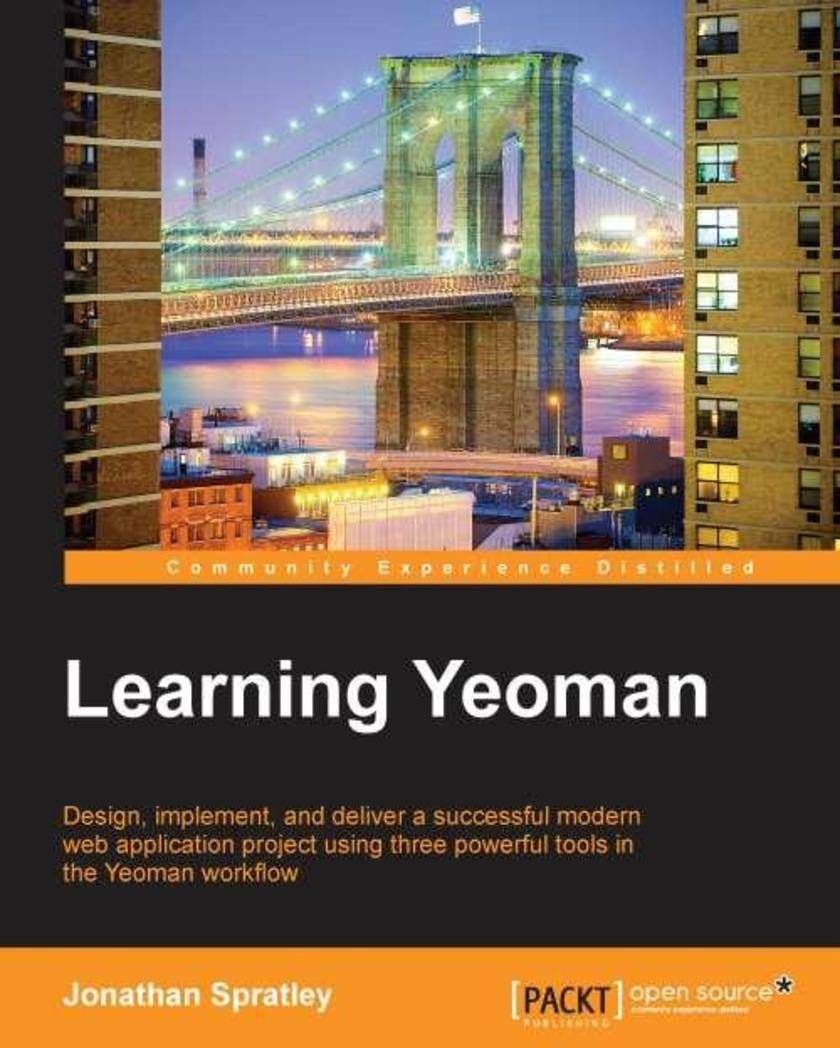
Learning Yeoman
¥86.10
If you are a web developer with some experience in JavaScript and want to enter the world of modern web applications, then this book is ideal for you. Learning how to leverage the three tools (Yo, Bower, and Grunt) in the Yeoman workflow will be perfect as your next step towards building scalable, dynamic, and modern web applications for just about any platform.
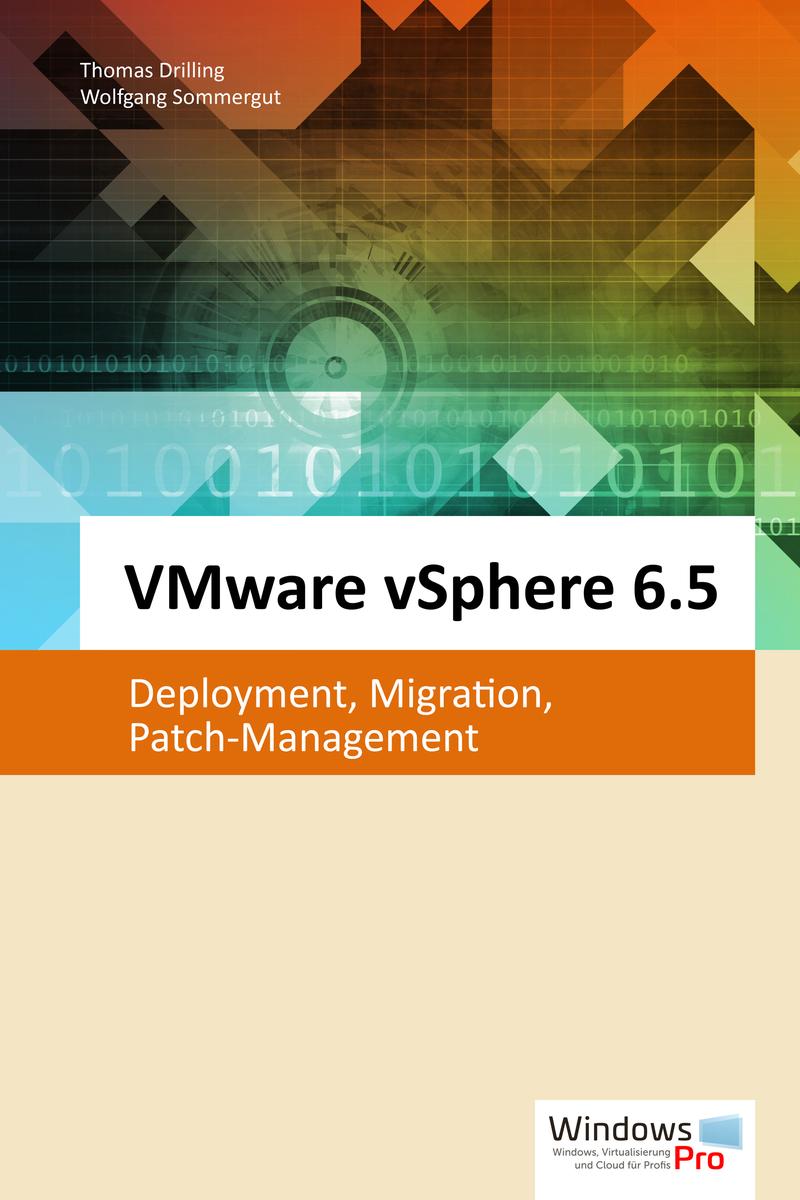
VMware vSphere 6.5: Deployment, Migration, Patch-Management
¥84.53
VMware vSphere 6.5: Deployment, Migration, Patch-Management
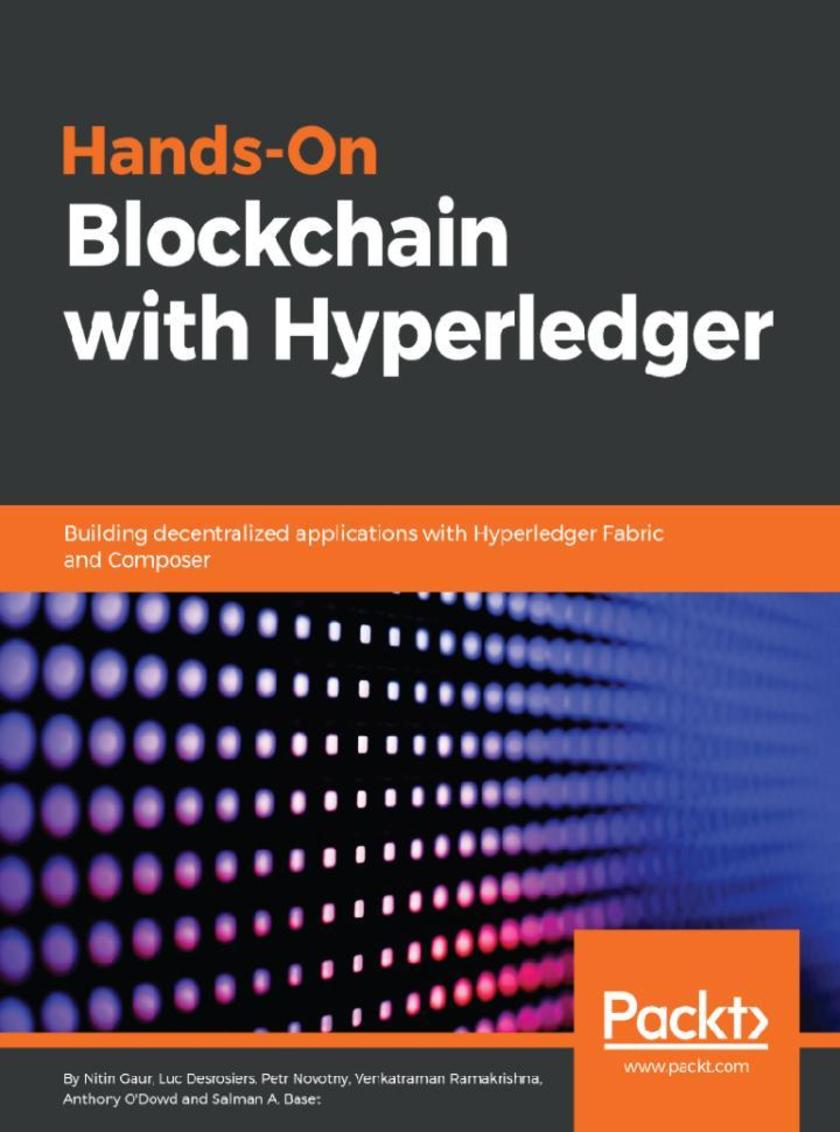
Hands-On Blockchain with Hyperledger
¥82.83
Leverage the power of Hyperledger Fabric to develop Blockchain-based distributed ledgers with ease About This Book ? Write your own chaincode/smart contracts using Golang on hyperledger network ? Build and deploy decentralized applications (DApps) ? Dive into real world blockchain challenges such as integration and scalability Who This Book Is For The book benefits business leaders as it provides a comprehensive view on blockchain business models, governance structure, and business design considerations of blockchain solutions. Technology leaders stand to gain a lot from the detailed discussion around the technology landscape, technology design, and architecture considerations in the book. With model-driven application development, this guide will speed up understanding and concept development for blockchain application developers. The simple and well organized content will put novices at ease with blockchain concepts and constructs. What You Will Learn ? Discover why blockchain is a game changer in the technology landscape ? Set up blockchain networks using basic Hyperledger Fabric deployment ? Understand the considerations for creating decentralized applications ? Learn the process of creating good business networks using Hyperledger ? Write Smart Contracts quickly with Hyperledger Composer ? Design transaction model and chaincode with Golang ? Deploy Composer REST Gateway to access the Composer transactions ? Discern how business network impacts your Hyperledger Fabric solutions In Detail Blockchain and Hyperledger technologies are hot topics. Hyperledger Fabric and Hyperledger Composer are open source projects that help organizations create private, permissioned blockchain networks. Applications that exploit them include finance, banking, supply chains, IoT, and much more. This book will be an easy reference to explore and build blockchain networks using Hyperledger technologies. This book will start by explaining the blockchain evolution, including an overview of relevant blockchain technologies. You will learn how to configure Hyperledger Fabric on a cloud platform. Understand the architectural components of Hyperledger Fabric, and how they are configured to build private blockchain networks, and applications that connect to them. You'll build up a network and application from scratch, starting with first principles. You'll learn how to implement smart contracts in chaincode and much more on the Hyperledger network. By the end of this book, you will be able to build and deploy your own decentralized applications using Hyperledger, addressing the key pain points encountered in the blockchain life cycle. Style and approach An easy-to-follow step by step guide which will help you get to grips with real world application of Hyperledger
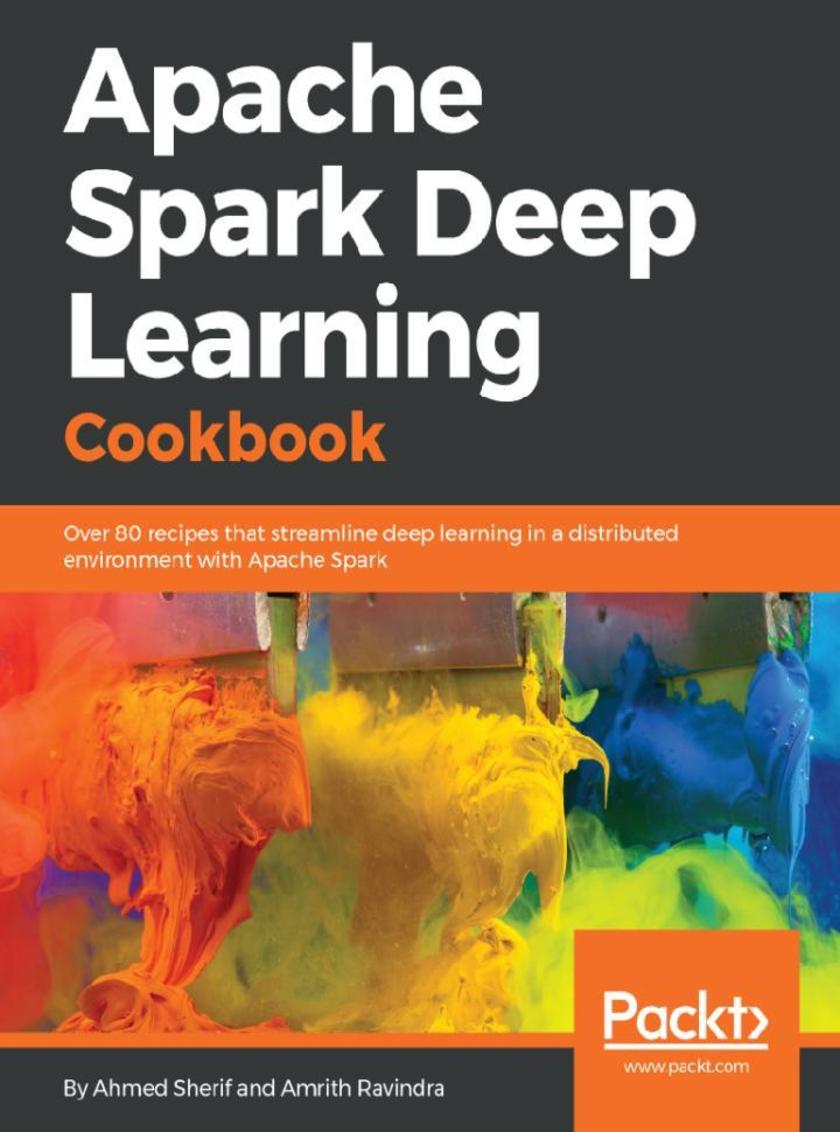
Apache Spark Deep Learning Cookbook
¥82.83
A solution-based guide to put your deep learning models into production with the power of Apache Spark Key Features * Discover practical recipes for distributed deep learning with Apache Spark * Learn to use libraries such as Keras and TensorFlow * Solve problems in order to train your deep learning models on Apache Spark Book Description With deep learning gaining rapid mainstream adoption in modern-day industries, organizations are looking for ways to unite popular big data tools with highly efficient deep learning libraries. As a result, this will help deep learning models train with higher efficiency and speed. With the help of the Apache Spark Deep Learning Cookbook, you’ll work through specific recipes to generate outcomes for deep learning algorithms, without getting bogged down in theory. From setting up Apache Spark for deep learning to implementing types of neural net, this book tackles both common and not so common problems to perform deep learning on a distributed environment. In addition to this, you’ll get access to deep learning code within Spark that can be reused to answer similar problems or tweaked to answer slightly different problems. You will also learn how to stream and cluster your data with Spark. Once you have got to grips with the basics, you’ll explore how to implement and deploy deep learning models, such as Convolutional Neural Networks (CNN) and Recurrent Neural Networks (RNN) in Spark, using popular libraries such as TensorFlow and Keras. By the end of the book, you'll have the expertise to train and deploy efficient deep learning models on Apache Spark. What you will learn * Set up a fully functional Spark environment * Understand practical machine learning and deep learning concepts * Apply built-in machine learning libraries within Spark * Explore libraries that are compatible with TensorFlow and Keras * Explore NLP models such as Word2vec and TF-IDF on Spark * Organize dataframes for deep learning evaluation * Apply testing and training modeling to ensure accuracy * Access readily available code that may be reusable Who this book is for If you’re looking for a practical and highly useful resource for implementing efficiently distributed deep learning models with Apache Spark, then the Apache Spark Deep Learning Cookbook is for you. Knowledge of the core machine learning concepts and a basic understanding of the Apache Spark framework is required to get the best out of this book. Additionally, some programming knowledge in Python is a plus.
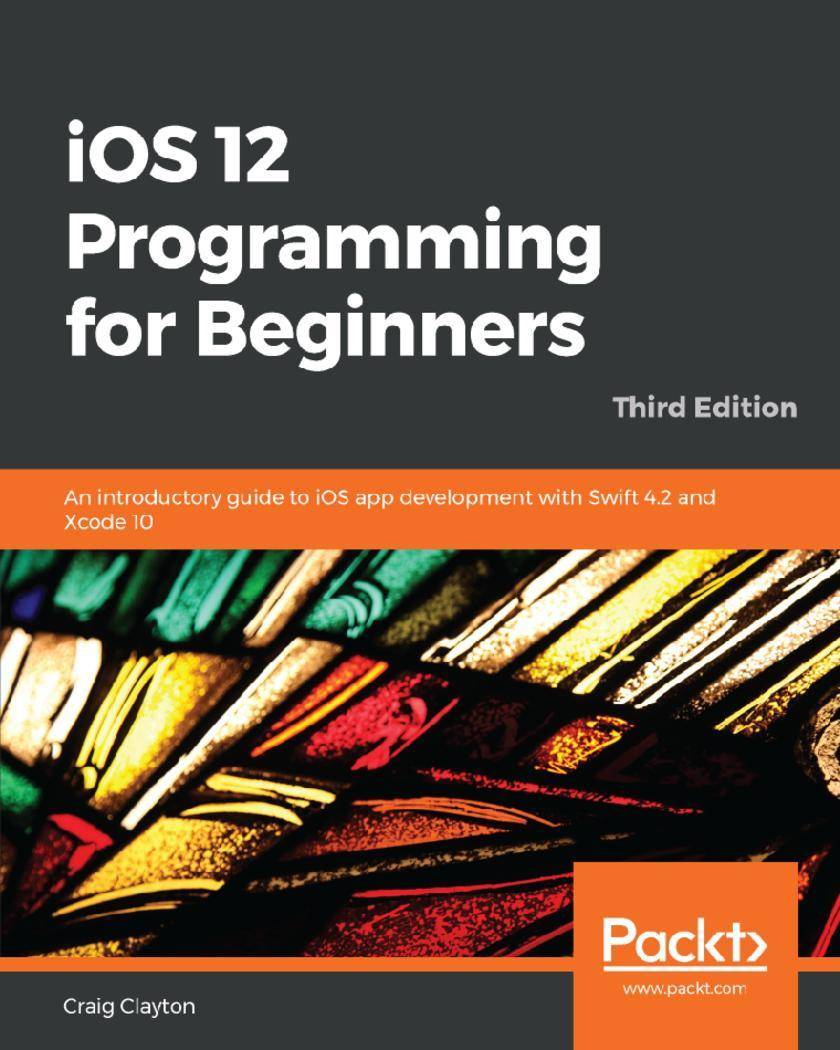
iOS 12 Programming for Beginners
¥81.74
Begin your iOS 12 app development journey with this practical guide Key Features *Kick-start your iOS programming career and have fun building iOS apps of your choice *Get to grips with Xcode 10 and Swift 4.2, the building blocks of iOS development *Discover the latest features of iOS 12 - SiriKit, notifications, and much more Book Description Want to build iOS 12 applications from scratch with the latest Swift 4.2 language and Xcode 10 by your side? Forget sifting through tutorials and blog posts; this book is a direct route to iOS development, taking you through the basics and showing you how to put principles into practice. Take advantage of this developer-friendly guide and start building applications that may just take the App Store by storm! If you’re already an experienced programmer, you can jump right in and learn the latest iOS 12 features. For beginners, this book starts by introducing you to iOS development as you learn Xcode and Swift. You'll also study advanced iOS design topics, such as gestures and animations, to give your app the edge. You’ll explore the latest Swift 4.2 and iOS 12 developments by incorporating new features, such as the latest in notifications, custom-UI notifications, maps, and the recent additions in Sirikit. The book will guide you in using TestFlight to quickly get to grips with everything you need to get your project on the App Store. By the end of this book, you'll be ready to start building your own cool iOS applications confidently. What you will learn *Explore the distinctive design principles that define the iOS user experience *Navigate panels within an Xcode project *Use the latest Xcode asset catalogue of Xcode 10 *Create a playgrounds project within your projects and understand how Ranges and Control flow work *Study operations with integers and work your way through if statements *Build a responsive UI and add privacy to your custom-rich notifications *Set up Sirikit to add voice for Siri shortcuts *Collect valuable feedback with TestFlight before releasing your apps on the App Store Who this book is for This book is for you if you are completely new to Swift, iOS, or programming and want to make iOS applications. However, you’ll also find this book useful if you’re an experienced programmer looking to explore the latest iOS 12 features.
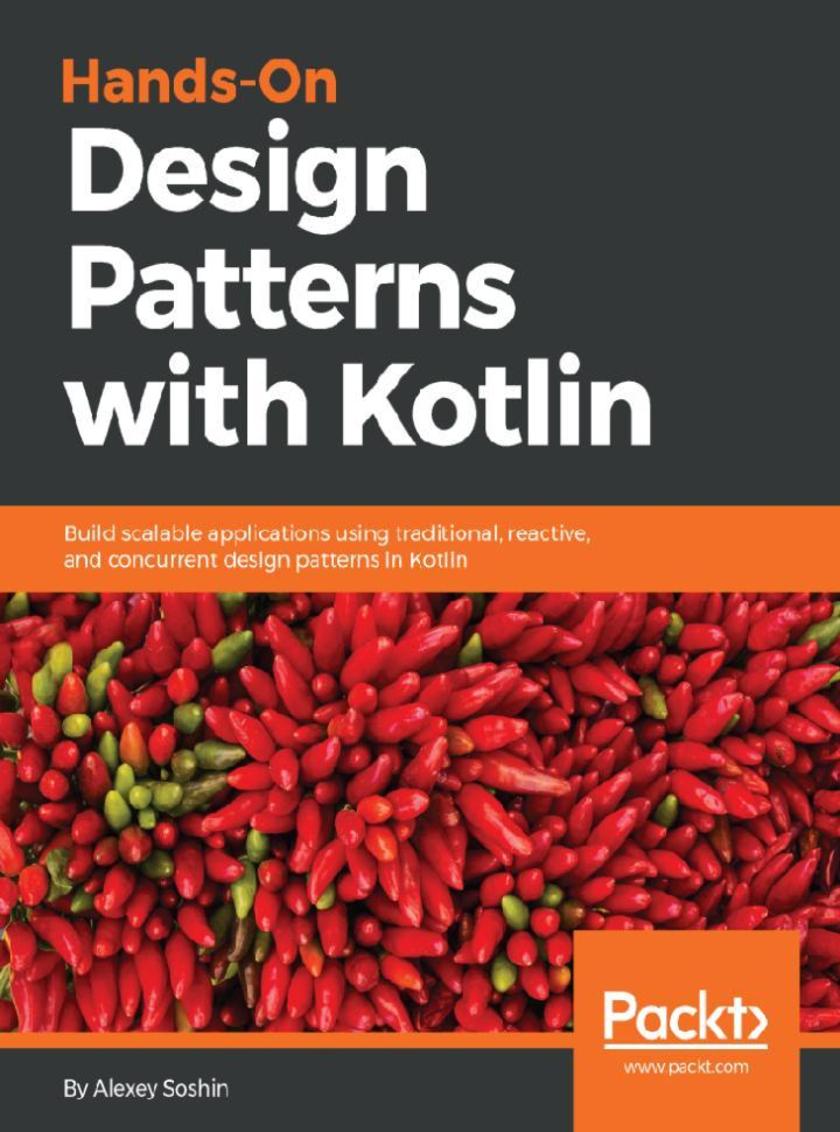
Hands-On Design Patterns with Kotlin
¥81.74
Make the most of Kotlin by leveraging design patterns and best practices to build scalable and high performing apps About This Book ? Understand traditional GOF design patterns to apply generic solutions ? Shift from OOP to FP; covering reactive and concurrent patterns in a step-by-step manner ? Choose the best microservices architecture and MVC for your development environment Who This Book Is For This book is for developers who would like to master design patterns with Kotlin to build efficient and scalable applications. Basic Java or Kotlin programming knowledge is assumed What You Will Learn ? Get to grips with Kotlin principles, including its strengths and weaknesses ? Understand classical design patterns in Kotlin ? Explore functional programming using built-in features of Kotlin ? Solve real-world problems using reactive and concurrent design patterns ? Use threads and coroutines to simplify concurrent code flow ? Understand antipatterns to write clean Kotlin code, avoiding common pitfalls ? Learn about the design considerations necessary while choosing between architectures In Detail Design patterns enable you as a developer to speed up the development process by providing you with proven development paradigms. Reusing design patterns helps prevent complex issues that can cause major problems, improves your code base, promotes code reuse, and makes an architecture more robust. The mission of this book is to ease the adoption of design patterns in Kotlin and provide good practices for programmers. The book begins by showing you the practical aspects of smarter coding in Kotlin, explaining the basic Kotlin syntax and the impact of design patterns. From there, the book provides an in-depth explanation of the classical design patterns of creational, structural, and behavioral families, before heading into functional programming. It then takes you through reactive and concurrent patterns, teaching you about using streams, threads, and coroutines to write better code along the way By the end of the book, you will be able to efficiently address common problems faced while developing applications and be comfortable working on scalable and maintainable projects of any size. Style and approach This book explains design patterns in a step-by-step manner with clear and concise code examples
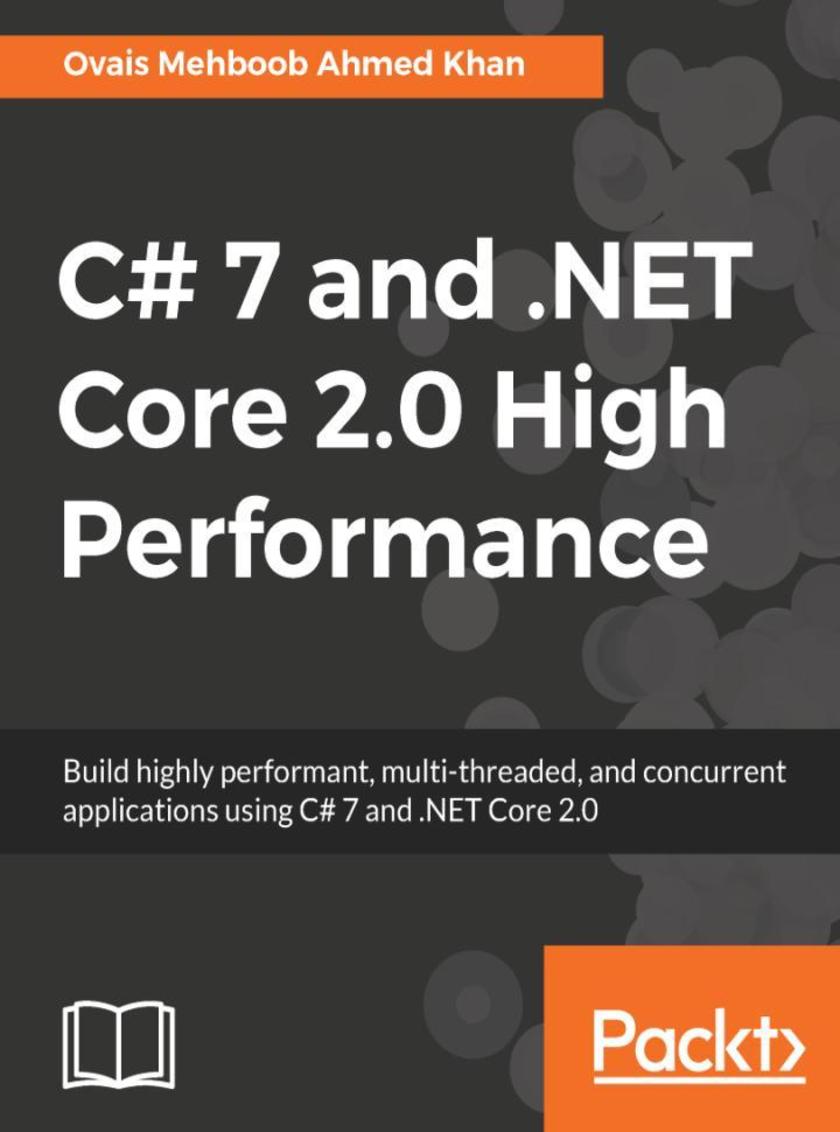
C# 7 and .NET Core 2.0 High Performance
¥81.74
Improve the speed of your code and optimize the performance of your apps About This Book ? Understand the common performance pitfalls and improve your application’s performance ? Get to grips with multi-threaded and asynchronous programming in C# ? Develop highly performant applications on .NET Core using microservice architecture Who This Book Is For This book is for .NET developers looking at improving the speed of their code or simply wanting to take their skills to the next level. Basic C# knowledge is assumed. What You Will Learn ? Measure application performance using BenchmarkDotNet ? Explore the techniques to write multithreaded applications ? Leverage TPL and PLinq libraries to perform asynchronous operations ? Get familiar with data structures to write optimized code ? Understand design techniques to increase your application’s performance ? Learn about memory management techniques in .NET Core ? Develop a containerized application based on microservices architecture ? Learn tools and techniques to monitor application performance In Detail While writing an application, performance is paramount. Performance tuning for realworld applications often involves activities geared toward fnding bottlenecks; however, this cannot solve the dreaded problem of slower code. If you want to improve the speed of your code and optimize an application's performance, then this book is for you. C# 7 and .NET Core 2.0 High Performance begins with an introduction to the new features of what?explaining how they help in improving an application's performance. Learn to identify the bottlenecks in writing programs and highlight common performance pitfalls, and learn strategies to detect and resolve these issues early. You will explore multithreading and asynchronous programming with .NET Core and learn the importance and effcient use of data structures. This is followed with memory management techniques and design guidelines to increase an application’s performance. Gradually, the book will show you the importance of microservices architecture for building highly performant applications and implementing resiliency and security in .NET Core. After reading this book, you will learn how to structure and build scalable, optimized, and robust applications in C#7 and .NET. Style and approach This book will be a step by step easy to follow guide with focused examples to increase performance of applications and provide optimization techniques.
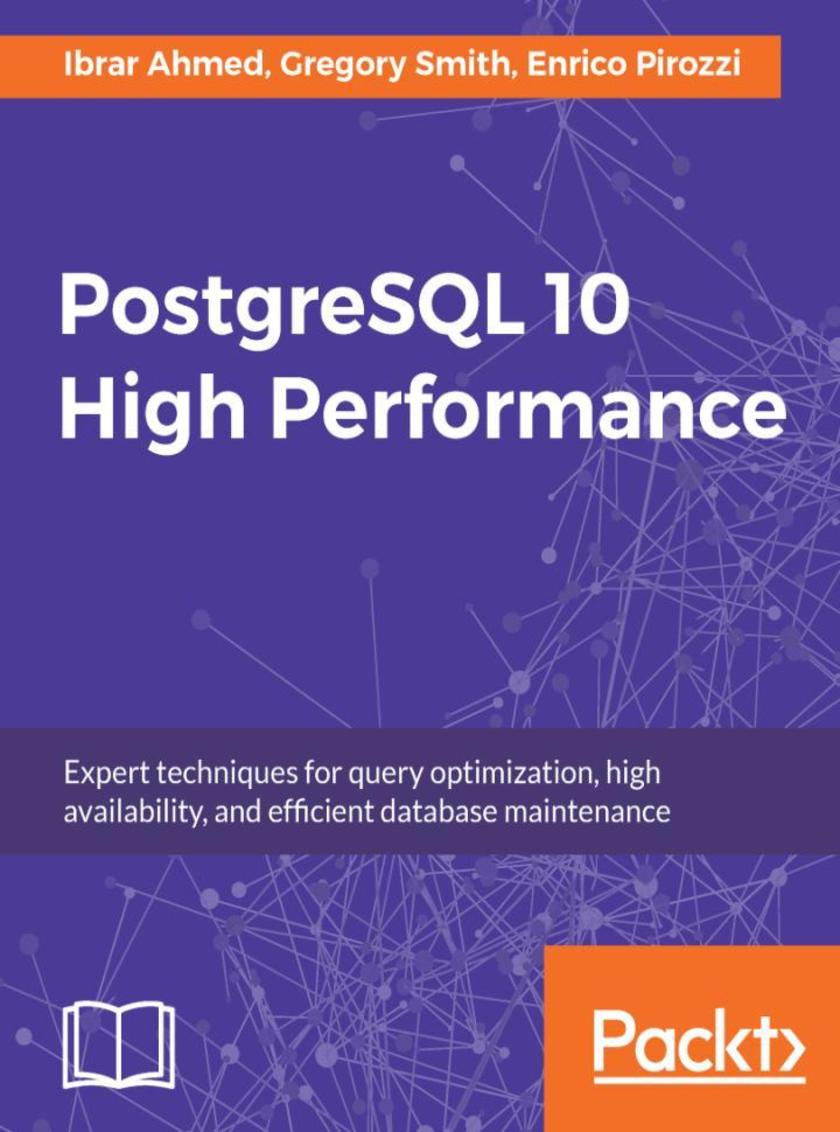
PostgreSQL 10 High Performance
¥81.74
Leverage the power of PostgreSQL 10 to design, administer and maintain a high-performance database solution About This Book ? Obtain optimal PostgreSQL 10 database performance, ranging from initial design to routine maintenance ? Fine tune the performance of your queries and avoid the common pitfalls that can slow your system down ? Contains tips and tricks on scaling successful database installations, and ensuring a highly available PostgreSQL solution Who This Book Is For This book is designed for database administrators and PostgreSQL architects who already use or plan to exploit the features of PostgreSQL 10 to design and maintain a high-performance PostgreSQL database. A working knowledge of SQL, and some experience with PostgreSQL will be helpful in getting the most out of this book. What You Will Learn ? Learn best practices for scaling PostgreSQL 10 installations ? Discover the best hardware for developing high-performance PostgreSQL applications ? Benchmark your whole system – from hardware to application ? Learn by real examples how server parameters impact performance ? Discover PostgreSQL 10 features for partitioning and parallel query ? Monitor your server, both inside and outside the database ? Design and implement a good replication system on PostgreSQL 10 In Detail PostgreSQL database servers have a common set of problems that they encounter as their usage gets heavier and requirements get more demanding. Peek into the future of your PostgreSQL 10 database's problems today. Know the warning signs to look for and how to avoid the most common issues before they even happen. Surprisingly, most PostgreSQL database applications evolve in the same way—choose the right hardware, tune the operating system and server memory use, optimize queries against the database and CPUs with the right indexes, and monitor every layer, from hardware to queries, using tools from inside and outside PostgreSQL. Also, using monitoring insight, PostgreSQL database applications continuously rework the design and configuration. On reaching the limits of a single server, they break things up; connection pooling, caching, partitioning, replication, and parallel queries can all help handle increasing database workloads. By the end of this book, you will have all the knowledge you need to design, run, and manage your PostgreSQL solution while ensuring high performance and high availability Style and approach This book has been organized in such a manner that will help you understand basic PostgreSQL 10 performance tuning to an advanced-level configuration.
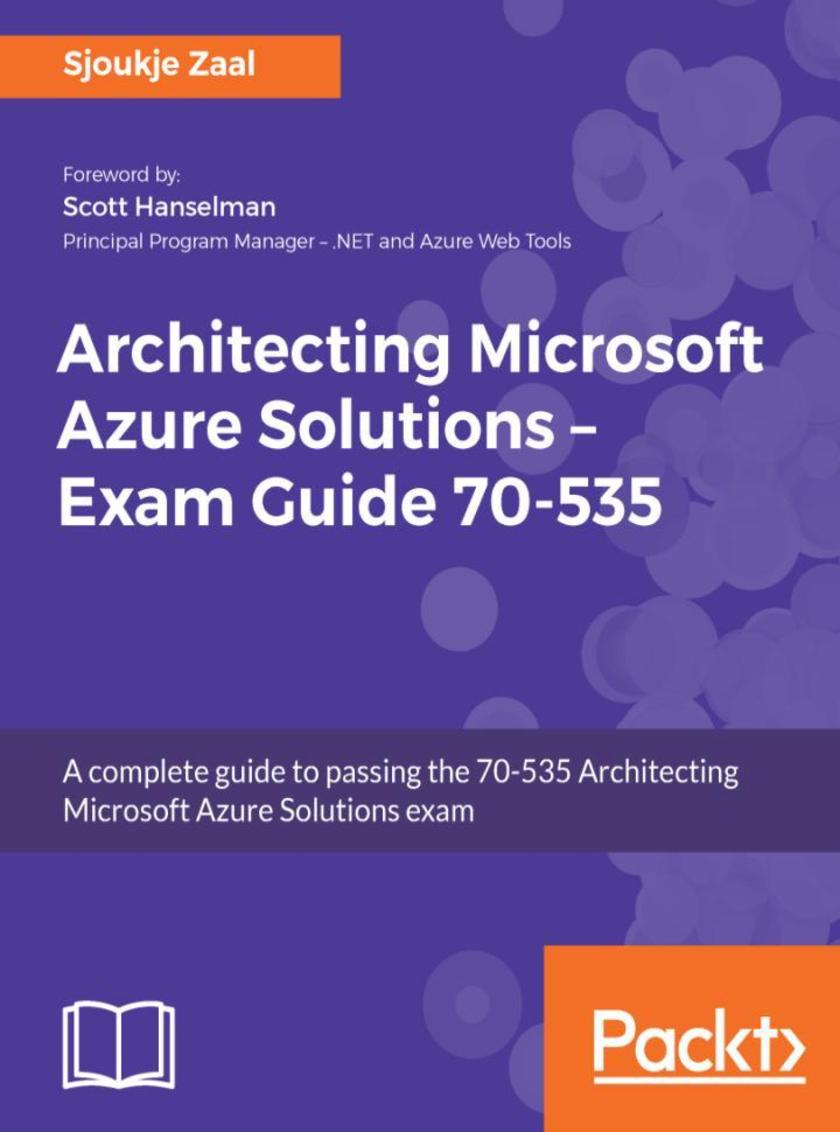
Architecting Microsoft Azure Solutions – Exam Guide 70-535
¥81.74
Get certified as an Azure architect by acing the 70-535 Architecting Microsoft Solutions (70-535) exam using this comprehensive guide with full coverage of the exam objectives About This Book ? Learn to successfully design and architect powerful solutions on the Azure Cloud platform ? Enhance your skills with mock tests and practice questions ? A detailed certification guide that will help you ace the 70-535 exam with confidence Who This Book Is For This book is for architects and experienced developers, who are gearing up for the 70-535 exam. Technical architects interested in learning more about designing Cloud solutions will also find this book useful. What You Will Learn ? Use Azure Virtual Machines to design effective VM deployments ? Implement architecture styles, like serverless computing and microservices ? Secure your data using different security features and design effective security strategies ? Design Azure storage solutions using various storage features ? Create identity management solutions for your applications and resources ? Architect state-of-the-art solutions using Artificial Intelligence, IoT, and Azure Media Services ? Use different automation solutions that are incorporated in the Azure platform In Detail Architecting Microsoft Azure Solutions: Exam Guide 70-535 will get Azure architects and developers up-to-date with the latest updates on Azure from an architecture and design perspective. The book includes all the topics that are still relevant from the previous 70-534 exam, and is updated with latest topics covered, including Artificial Intelligence, IoT, and architecture styles. This exam guide is divided into six parts, where the first part will give you a good understanding of how to design a compute infrastructure. It also dives into designing networking and data implementations. You will learn about designing solutions for Platform Service and operations. Next, you will be able to secure your resources and data, as well as design a mechanism for governance and policies. You will also understand the objective of designing solutions for Platform Services, by covering Artificial Intelligence, IoT, media services, and messaging solution concepts. Finally, you will cover the designing for operations objective. This objective covers application and platform monitoring, as well as designing alerting strategies and operations automation strategies. By the end of the book, you'll have met all of the exam objectives, and will have all the information you need to ace the 70-535 exam. You will also have become an expert in designing solutions on Microsoft Azure. Style and approach This book offers clear and crisp explanations of the exam objectives that will help you with all the information needed to pass the 70-535 exam. The detail oriented approach will make you an expert on designing solutions on Microsoft Azure.
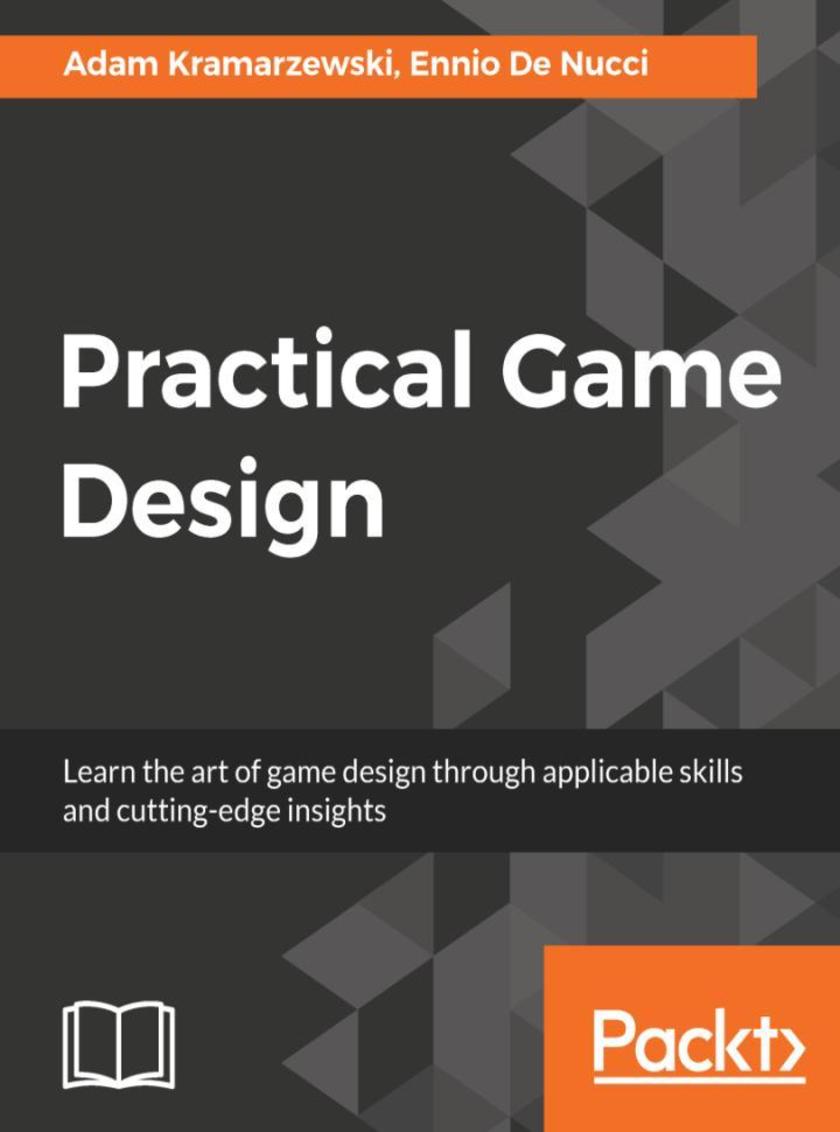
Practical Game Design
¥81.74
Design accessible and creative games across genres, platforms, and development realities About This Book ? Implement the skills and techniques required to work in a professional studio ? Ace the core principles and processes of level design, world building, and storytelling ? Design interactive characters that animate the gaming world Who This Book Is For Whether you are a student eager to design a game or a junior game designer looking for your first role as a professional, this book will help you with the fundamentals of game design. By focusing on best practices and a pragmatic approach, Practical Game Design provides insights into the arts and crafts from two senior game designers that will interest more seasoned professionals in the game industry. What You Will Learn ? Define the scope and structure of a game project ? Conceptualize a game idea and present it to others ? Design gameplay systems and communicate them clearly and thoroughly ? Build and validate engaging game mechanics ? Design successful business models and prepare your games for live operations ? Master the principles behind level design, worldbuilding and storytelling ? Improve the quality of a game by playtesting and polishing it In Detail If you are looking for an up-to-date and highly applicable guide to game design, then you have come to the right place! Immerse yourself in the fundamentals of game design with this book, written by two highly experienced industry professionals to share their profound insights as well as give valuable advice on creating games across genres and development platforms. Practical Game Design covers the basics of game design one piece at a time. Starting with learning how to conceptualize a game idea and present it to the development team, you will gradually move on to devising a design plan for the whole project and adapting solutions from other games. You will also discover how to produce original game mechanics without relying on existing reference material, and test and eliminate anticipated design risks. You will then design elements that compose the playtime of a game, followed by making game mechanics, content, and interface accessible to all players. You will also find out how to simultaneously ensure that the gameplay mechanics and content are working as intended. As the book reaches its final chapters, you will learn to wrap up a game ahead of its release date, work through the different challenges of designing free-to-play games, and understand how to significantly improve their quality through iteration, polishing and playtesting. Style and approach A practical step by step guide to get you up and running with Game Design from scratch
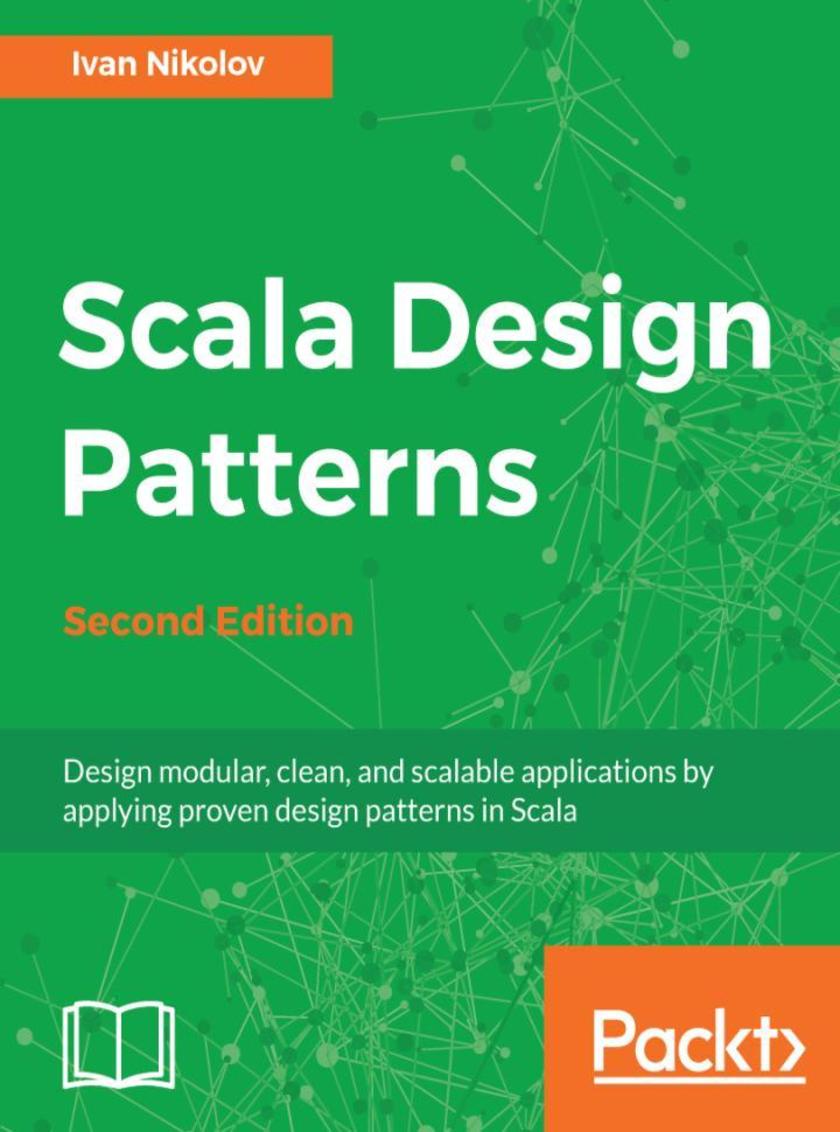
Scala Design Patterns.
¥81.74
Learn how to write efficient, clean, and reusable code with Scala About This Book ? Unleash the power of Scala and apply it in the real world to build scalable and robust applications. ? Learn about using and implementing Creational, Structural, Behavioral, and Functional design patterns in Scala ? Learn how to build scalable and extendable applications efficiently Who This Book Is For If you want to increase your understanding of Scala and apply design patterns to real-life application development, then this book is for you.Prior knowledge of Scala language is assumed/ expected. What You Will Learn ? Immerse yourself in industry-standard design patterns—structural, creational, and behavioral—to create extraordinary applications ? See the power of traits and their application in Scala ? Implement abstract and self types and build clean design patterns ? Build complex entity relationships using structural design patterns ? Create applications faster by applying functional design patterns In Detail Design patterns make developers’ lives easier by helping them write great software that is easy to maintain, runs efficiently, and is valuable to the company or people concerned. You’ll learn about the various features of Scala and will be able to apply well-known, industry-proven design patterns in your work. The book starts off by focusing on some of the most interesting and latest features of Scala while using practical real-world examples. We will be learning about IDE’s and Aspect Oriented Programming. We will be looking into different components in Scala. We will also cover the popular "Gang of Four" design patterns and show you how to incorporate functional patterns effectively. The book ends with a practical example that demonstrates how the presented material can be combined in real-life applications. You’ll learn the necessary concepts to build enterprise-grade applications. By the end of this book, you’ll have enough knowledge and understanding to quickly assess problems and come up with elegant solutions. Style and approach The design patterns in the book are explained using real-world, step-by-step examples. For each design pattern, there are tips on when to use it and when to look for something more suitable. This book can also be used as a practical guide, showing you how to leverage design patterns effectively. We've designed the book to be used as a quick reference guide while creating applications.
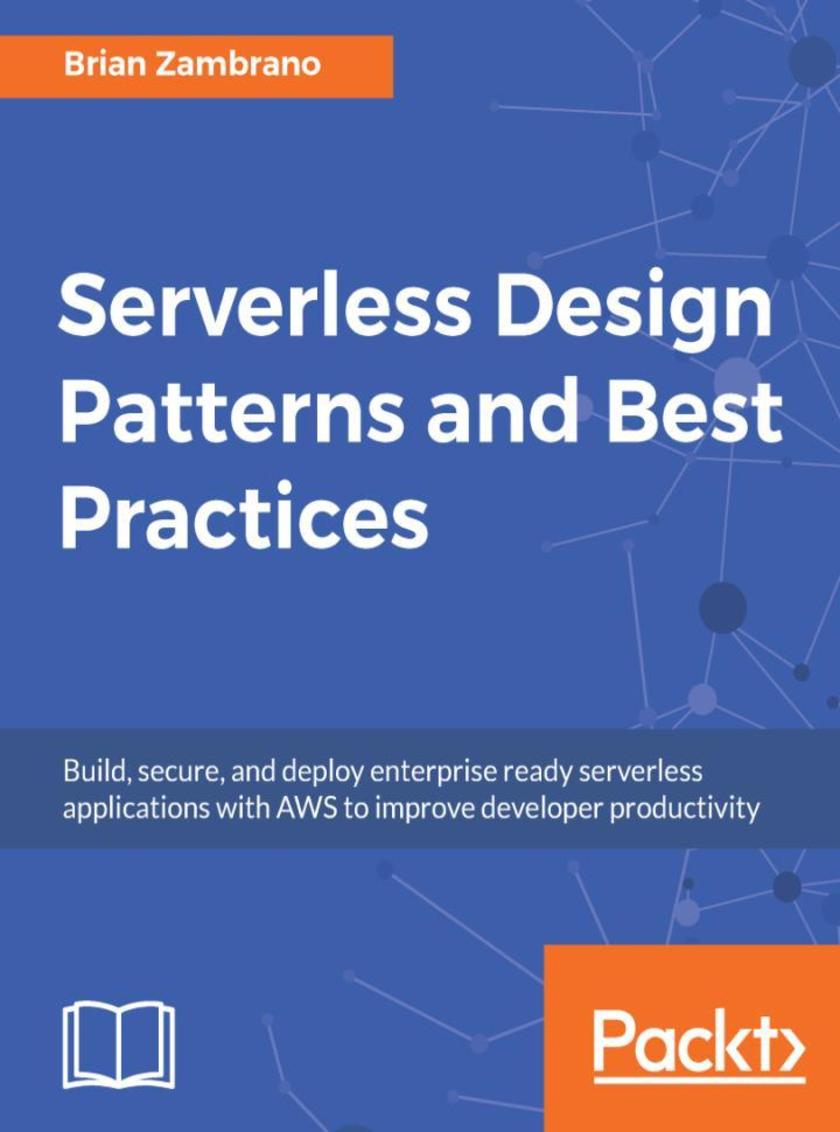
Serverless Design Patterns and Best Practices
¥81.74
Get started with designing your serverless application using optimum design patterns and industry standard practices About This Book ? Learn the details of popular software patterns and how they are applied to serverless applications ? Understand key concepts and components in serverless designs ? Walk away with a thorough understanding of architecting serverless applications Who This Book Is For If you're a software architect, engineer, or someone who wants to build serverless applications, which are non-trivial in complexity and scope, then this book is for you. Basic knowledge of programming and serverless computing concepts are assumed. What You Will Learn ? Comprehend the popular design patterns currently being used with serverless architectures ? Understand the various design options and corresponding implementations for serverless web application APIs ? Learn multiple patterns for data-intensive serverless systems and pipelines, including MapReduce and Lambda Architecture ? Learn how to leverage hosted databases, queues, streams, storage services, and notification services ? Understand error handling and system monitoring in a serverless architecture a serverless architecture ? Learn how to set up a serverless application for continuous integration, continuous delivery, and continuous deployment In Detail Serverless applications handle many problems that developers face when running systems and servers. The serverless pay-per-invocation model can also result in drastic cost savings, contributing to its popularity. While it's simple to create a basic serverless application, it's critical to structure your software correctly to ensure it continues to succeed as it grows. Serverless Design Patterns and Best Practices presents patterns that can be adapted to run in a serverless environment. You will learn how to develop applications that are scalable, fault tolerant, and well-tested. The book begins with an introduction to the different design pattern categories available for serverless applications. You will learn the trade-offs between GraphQL and REST and how they fare regarding overall application design in a serverless ecosystem. The book will also show you how to migrate an existing API to a serverless backend using AWS API Gateway. You will learn how to build event-driven applications using queuing and streaming systems, such as AWS Simple Queuing Service (SQS) and AWS Kinesis. Patterns for data-intensive serverless application are also explained, including the lambda architecture and MapReduce. This book will equip you with the knowledge and skills you need to develop scalable and resilient serverless applications confidently. Style and approach Readers will be taken through a set of specific software patterns and learn, in detail, how to apply these patterns and build working software on top of a serverless system. At each step along the way, the reader will learn about the subcomponents and subsystems which comprise the larger system and which may be used in the future to solve different types of challenges.
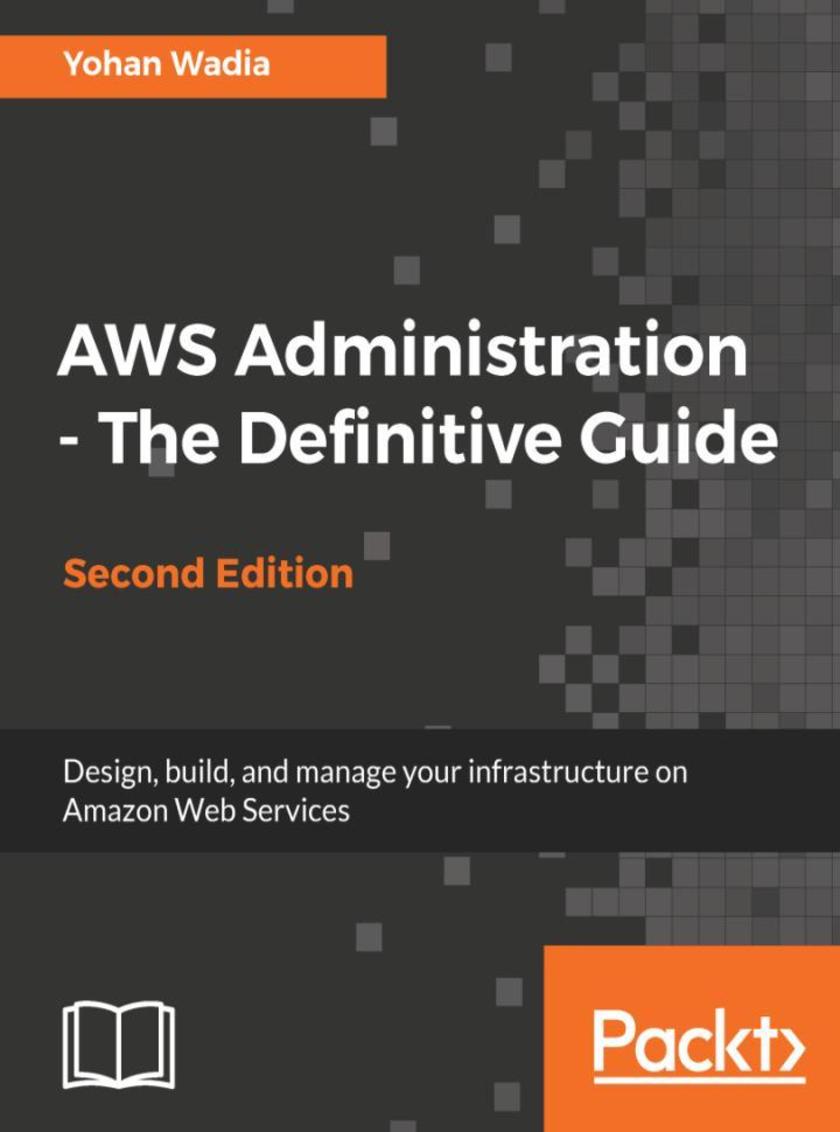
AWS Administration - The Definitive Guide - Second Edition
¥81.74
Leverage this step-by-step guide to build a highly secure, fault-tolerant, and scalable Cloud environment About This Book ? Learn how to leverage various Amazon Web Services (AWS) components and services to build a secure, reliable, and robust environment to host your applications on. ? Delve into core AWS service offerings with hands-on tutorials, real-world use case scenarios, and best practices. ? A self-paced, systematic, and step-by-step guide to learning and implementing AWS in your own environment. Who This Book Is For This book is for those who want to learn and leverage the rich plethora of services provided by AWS. Although no prior experience with AWS is required, it is recommended that you have some hands-on experience of Linux, Web Services, and basic networking. What You Will Learn ? Take an in-depth look at what's new with AWS, along with how to effectively manage and automate your EC2 infrastructure with AWS Systems Manager ? Deploy and scale your applications with ease using AWS Elastic Beanstalk and Amazon Elastic File System ? Secure and govern your environments using AWS CloudTrail, AWS Config, and AWS Shield ? Learn the DevOps way using a combination of AWS CodeCommit, AWS CodeDeploy, and AWS CodePipeline ? Run big data analytics and workloads using Amazon EMR and Amazon Redshift ? Learn to back up and safeguard your data using AWS Data Pipeline ? Get started with the Internet of Things using AWS IoT and AWS Greengrass In Detail Many businesses are moving from traditional data centers to AWS because of its reliability, vast service offerings, lower costs, and high rate of innovation. AWS can be used to accomplish a variety of both simple and tedious tasks. Whether you are a seasoned system admin or a rookie, this book will help you to learn all the skills you need to work with the AWS cloud. This book guides you through some of the most popular AWS services, such as EC2, Elastic Beanstalk, EFS, CloudTrail, Redshift, EMR, Data Pipeline, and IoT using a simple, real-world, application-hosting example. This book will also enhance your application delivery skills with the latest AWS services, such as CodeCommit, CodeDeploy, and CodePipeline, to provide continuous delivery and deployment, while also securing and monitoring your environment's workflow. Each chapter is designed to provide you with maximal information about each AWS service, coupled with easy to follow, hands-on steps, best practices, tips, and recommendations. By the end of the book, you will be able to create a highly secure, fault-tolerant, and scalable environment for your applications to run on. Style and approach This in-depth and insightful guide is filled with easy-to-follow examples, real-world use cases, best practices, and recommendations that will help you design and leverage some of the most commonly used AWS services.
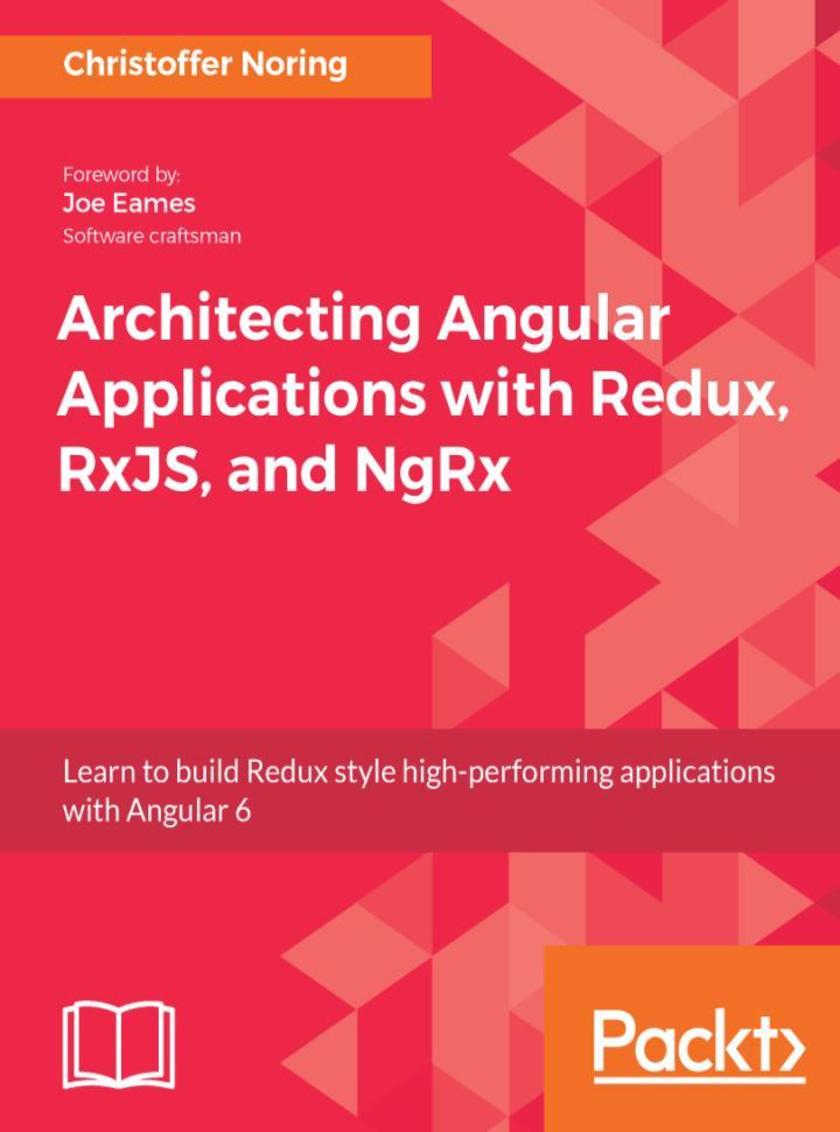
Architecting Angular Applications with Redux, RxJS, and NgRx
¥81.74
Manage state in Angular to write high performing web apps by combining the power of Flux, RxJS, and NgRx About This Book ? Learn what makes an excellent Angular application architecture ? Use Redux to write performant, consistent Angular applications ? Incorporate Reactive Programming principles and RxJS to make it easier to develop, test, and debug your Angular applications Who This Book Is For If you have been developing Angular applications and want to dive deeper into the Angular architecture with Redux, RxJS, and NgRx to write robust web apps, then this book is for you. What You Will Learn ? Understand the one-way data flow and Flux pattern ? Work with functional programming and asynchronous data streams ? Figure out how RxJS can help us address the flaws in promises ? Set up different versions of cascading calls ? Explore advanced operators ? Get familiar with the Redux pattern and its principles ? Test and debug different features of your application ? Build your own lightweight app using Flux, Redux, and NgRx In Detail Managing the state of large-scale web applications is a highly challenging task with the need to align different components, backends, and web workers harmoniously. When it comes to Angular, you can use NgRx, which combines the simplicity of Redux with the reactive programming power of RxJS to build your application architecture, making your code elegant and easy to reason about, debug, and test. In this book, we start by looking at the different ways of architecting Angular applications and some of the patterns that are involved in it. This will be followed by a discussion on one-way data flow, the Flux pattern, and the origin of Redux. The book introduces you to declarative programming or, more precisely, functional programming and talks about its advantages. We then move on to the reactive programming paradigm. Reactive programming is a concept heavily used in Angular and is at the core of NgRx. Later, we look at RxJS, as a library and master it. We thoroughly describe how Redux works and how to implement it from scratch. The two last chapters of the book cover everything NgRx has to offer in terms of core functionality and supporting libraries, including how to build a micro implementation of NgRx. This book will empower you to not only use Redux and NgRx to the fullest, but also feel confident in building your own version, should you need it. Style and approach This book covers everything there is to know to get well-acquainted with Angular without bogging you down. Everything is neatly laid out under clear headings for quick consultation, giving you the information required to understand a concept immediately.




 购物车
购物车 个人中心
个人中心



